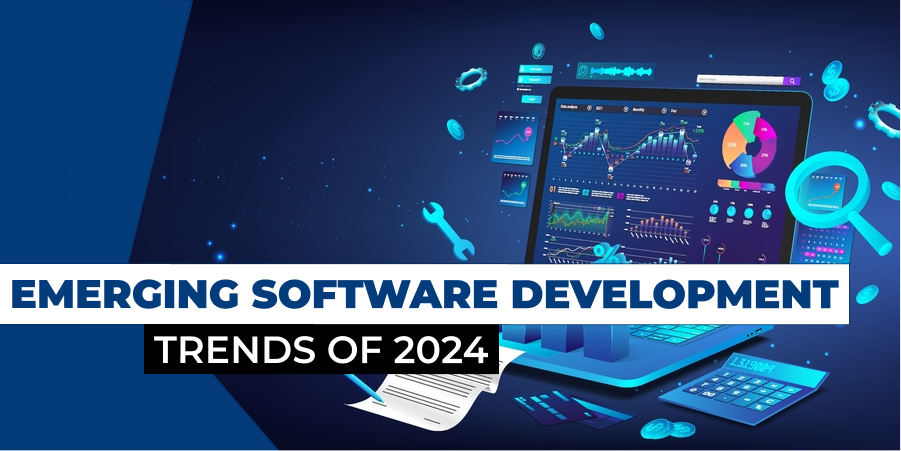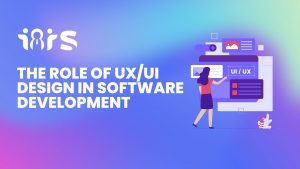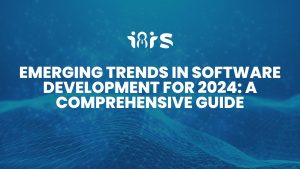As we step into 2024, the software development industry is evolving rapidly, marked by technological advancements, economic challenges, and emerging opportunities. The year 2024 has brought a unique set of circumstances, from high inflation affecting financial strategies to the unwavering commitment of businesses towards digital transformation. Small and midsize companies have notably increased their technology budgets, recognizing the indispensable need for digitization in a fluctuating technology landscape.
The Software Buying Landscape in 2024
CIOs and CTOs are actively aligning with the latest software technologies, investing in solutions that streamline operations and maintain competitiveness. The software industry, projected to exceed $1 billion by 2025, is undergoing rapid transformation, emphasizing the increasing demand for emerging software technologies.
Key Software Development Trends in 2024
1. Progressive Web Apps (PWAs)
PWAs have become an essential part of the tech landscape. The global market for PWAs, as estimated, might reach around USD 10.44 billion by 2027. With the surge in mobile usage, PWAs offer an attractive, app-like experience for users, reducing development costs. Pinterest’s successful transformation into a PWA, which resulted in a significant increase in user engagement and ad revenue, is a testament to the potential of PWAs.
2. Blockchain Beyond Finance
Blockchain’s application is expanding beyond the financial sector, offering unparalleled security for data transactions. Its market value is expected to reach $20 billion by 2024, indicating its widespread adoption across various industries.
3. The 5G Revolution
The rollout of 5G is reshaping connectivity, with predictions of over 1.4 billion devices connected by 2025. This advancement is set to enhance user experiences and boost the growth of technologies like IoT, AR, and AI.
4. IoT Integration
IoT’s integration in various sectors, from smart homes to industrial monitoring, is bridging the physical and digital realms. The market in Asia Pacific alone is projected to exceed US $437 billion by 2025. IoT’s fusion with AI and ML is enhancing its applicability in numerous fields.
5. Low-Code Development
Low-code development is streamlining the software creation process, making it faster and more budget-friendly. Its adoption is expected to surpass 50% in the next decade, as indicated by Gartner’s research.
6. Python’s Dominance
With the rise of machine learning and data science, Python remains a preferred language for its versatility and efficiency in various applications, from web design to AI models.
7. AI as a Daily Tool
AI’s integration in predictive analytics and data-driven decision-making continues to grow, with its market expected to exceed half a trillion dollars by 2024.
8. React Native’s Growing Popularity
React Native has become a crucial tool for hybrid app development, allowing for the creation of high-quality, cross-platform applications with a single codebase.
9. The AR and VR Wave
AR and VR technologies are transforming the e-commerce landscape, enhancing customer interactions and experiences.
10. FinOps and GreenOps
These movements emphasize operational efficiency and environmental sustainability, becoming increasingly significant in cloud computing strategies.
11. Distributed Computing
Distributed computing, involving connected computer servers for efficient data sharing and processing, is gaining traction and is set to be supported by most cloud service providers by 2024.
12. The Evolution of Web 3.0
Web 3.0 represents a new era of the internet, marked by more interactive and dynamic applications, enhancing user experiences on various devices.
13. NFTs in the Cryptocurrency Sphere
Non-fungible tokens (NFTs) have gained significant attention, with a market growth rate of 34.2% expected from 2023 to 2030. Their unique characteristics make them a popular choice for Blockchain-based transactions.
14. Cloud-Native Technologies
Cloud-native technologies are reshaping the way businesses operate in cloud environments, emphasizing agility and speed.
15. Internet of Behavior (IoB)
IoB is merging user behavior data with technology, providing insights for personalized user experiences. It is expected to track 40% of the world’s population by the end of 2023.
16. Microservice Architecture
Microservices are becoming a preferred software development approach for their modular and scalable nature.
17. Infrastructure as Code (IaC)
IaC is transforming IT infrastructure management, allowing for automated provisioning and management through machine-readable files.
18. DevSecOps
Integrating security throughout the software development lifecycle, DevSecOps is becoming essential for maintaining robust cybersecurity standards.
19. Kubernetes
Kubernetes is revolutionizing the management of containerized applications, offering scalability and efficiency in deployment processes.
20. Outsourcing Software Development
Software development outsourcing has become a buzz and common methodology for which every organization has opted over an in-house team. As per the report from Deloitte, 70% of respondents stated cost reduction as a primary concern for outsourcing.
Outsourcing development companies can offer numerous services, including development, MVP development, testing, deployment, and support. Furthermore, they also provide a vast pool of technocrats specializing in multiple technologies and skills.





